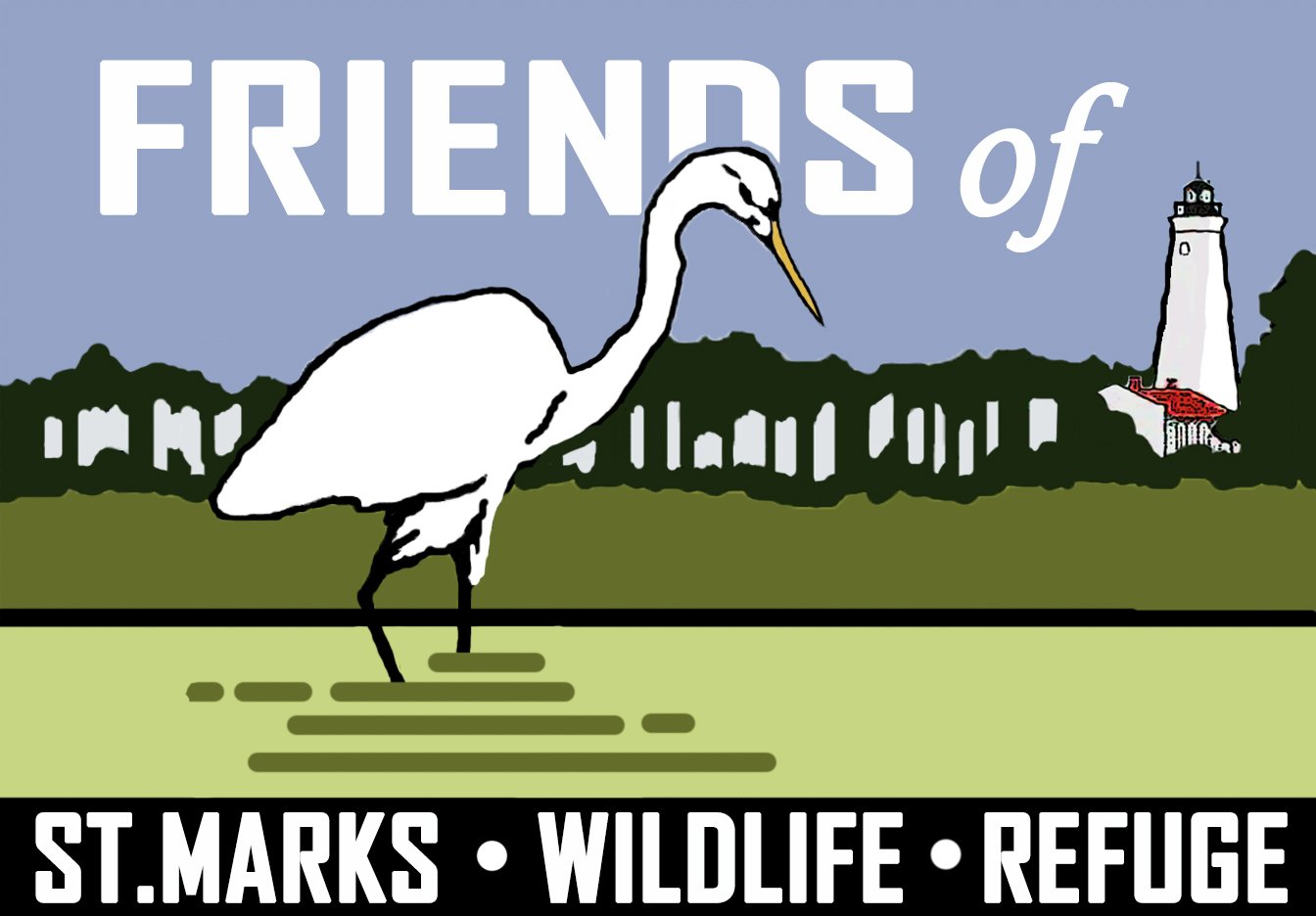U. S. Fish and Wildlife
The U.S. Department of the Interior is a Cabinet-level agency that manages America's vast natural and cultural resources. Included in the nine bureaus of this agency are the National Park Service and the U. S. Fish and Wildlife Service (USFWS) that manages the National Wildlife Refuge System.
You are on the website of the Friends of St. Marks Wildlife Refuge. If you want to visit the USFWS website, follow this link.
National Wildlife Refuge System
The first National Wildlife Refuge was Pelican Island, right here in Florida. It was established in 1903, and since then the System has grown to over 550 refuges collectively covering over 100 million acres of land and 750 million acres of oceans.
These refuges provide habitats for many species—more than 700 birds, 220 mammals, 1000 fish, and 250 reptiles and amphibians, including 238 threatened or endangered plants and animals. Unlike national and state parks, refuges aren't available (for the most part) for camping but are open for wildlife observation, photography, education, hunting and fishing. In addition to conserving natural spaces, refuges also help restore habitats.
There is at least one National Wildlife Refuge in every state, and one within an hour's drive of most major cities. They offer a welcoming, safe, and accessible place to nourish your spirit and reconnect to the land.
St. Marks National Wildlife Refuge
St. Mark's National Wildlife Refuge was established in 1931 to provide habitat for migrating waterfowl. Today encompasses 80,000 acres including 16,000 acres designated by Congress as a wilderness area. Its wide diversity of habitats, including open water, salt marsh, swamps, fresh water pools, hardwoods, and upland pine areas make the refuge home for an equally wide variety of wildlife.
St. Marks NWR is part of the North Florida Refuges Complex, 95,000 acres of wildlife protection! The complex includes four Wildlife Refuges: St. Marks, St. Vincent, Lower Suwannee and Cedar Keys. It also includes conservation easements across 13 counties in southwestern Georgia and the Florida panhandle.
Our complex unifies the wildlife refuges along Florida’s “Big Bend” or “Nature Coast”—one of the largest, undeveloped, mostly privately-held coastal areas in the nation.
St. Marks is a Daylight Use Only refuge. The gates open at 6:00 a.m. and close at approximately at sunset, the actual time varying slightly with the season.
Friends of St. Marks Wildlife Refuge
The Friends of St. Marks Wildlife Refuge was formed in 1987. We are a non-profit 501 (c) (3) organization providing support for the refuge and its staff. You can read more about the Friends organization on the ‘About’ page.
“Since its inception, the Friends of St. Marks Wildlife Refuge has made stewardship and environmental education of all generations part of its mission.”
Robin Will, Supervisory Refuge Ranger and Friends Liaison





